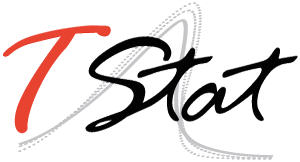The field of Social Network Analysis is one of the most rapidly growing fields of the social sciences. Social network analysis focuses on the relationships that exist between individuals (or other units of analysis) such as friendship, advice, trust, or trade relationships. As such, network analysis is concerned with the visualization and analysis of network structures, as well as with the importance of networks for individuals’ propensities to adopt different kinds of behaviors. Up until now, researchers wishing to implement this type of analysis have been force to use specialized software for network analysis. A new set of user written commands (developed by Thomas Grund, coauthor of the forthcoming Stata Press title “An Introduction to Social Network Analysis and Agent-Based Modeling Using Stata”) are however, now available for Stata. This workshop introduces the so-called nwcommands suite of over 90 Stata commands for social network analysis. The suite includes commands for importing, exporting, loading, saving, handling, manipulating, replacing, generating, visualizing, and animating networks. It also includes commands for measuring various properties of the networks and the individual nodes, for detecting network patterns and measuring the similarity of different networks, as well as advanced statistical techniques for network analysis including MR-QAP and ERGM.
In common with TStat’s workshop philosophy, each individual session, is composed of both a theoretical component (in which the techniques and underlying principles behind them are explained), and an applied (hands-on) segment, during which participants have the opportunity to implement the techniques using real data under the watchful eye of the course tutor. Throughout the workshop, theoretical sessions are reinforced by case study examples, in which the course tutor discusses current research issues, highlighting potential pitfalls and the advantages of individual techniques. The intuition behind the choice and implementation of a specific technique is of the utmost importance. In this manner, course leaders are able to bridge the “often difficult” gap between abstract theoretical methodologies, and the practical issues one encounters when dealing with real data. At the end of the course, participants are expected to be able to autonomously implement the theories and methodologies discussed during the workshop.
The workshop provides an interdisciplinary opportunity for social scientists, mathematicians, computer scientists, ethnologists, epidemiologists, organizational theorists to acquire the necessary statistical tools required to analyse social networks in Stata.
Working knowledge of Stata.
SESSION I: INSTALLING NETWORK COMMANDS
Theoretical motivation
Networks and node attributes
Finding help: help
Managing variables
Return vector: return, ereturn
User written commands: adopath
Installation of nwcommands
Dialog boxes for network commands
SESSION II: GETTING STARTED WITH NETWORKS
Setting networks: nwset
Listing networks: nwds
Current network: nwcurrent
Using and saving networks: nwuse, nwsave
Importing and exporting networks: nwexport, nwimport
Dropping and keeping networks: nwdrop, nwkeep, nwclear
Network transformation: nwtoedge, nwfromedge
SESSION III: NETWORK VISUALIZATION
Schemes
Network visualization: nwplot, nwplotmatrix, nwplotjs
Animation of networks: nwmovie
SESSION IV: NETWORK EXAMINATION
Summarize networks: nwsummarize
Tabulate networks: nwtabulate
Dyads, triads: nwdyads, nwtriads
Simmelian ties: nwsimmelian
Components: nwcomponents
SESSION V: DISTANCE AND PATHS
Distance and paths: nwgeodesic, nwpath
Distance distribution
Shortest paths
Local and global bridges: nwbridge
SESSION VI: NEIGHBOURS AND CONTEXT
Network neighbours: nwneighbor
Attributes of neighbours: nwcontext
Attributes of neighbours at certain distance
SESSION VII: CENTRALITY AND CENTRALIZATION
Importance in networks
Degree centrality: nwdegree
Betweenness centrality: nwbetween
Katz centrality: nwkatz
Closeness centrality: nwcloseness
Centralization in networks
SESSION VIII: CHANGING NETWORKS
Extract tie values
Change networks: nwreplace, nwreplacemat, nwrecode
Symmetrize: nwsym
SESSION IX: CALCULATING WITH NETWORKS
Multiplying networks
Adding networks
Network generators: nwgen
Network expressions
SESSION X: NETWORK SIMULATION
Random networks
Lattice networks
Small-world networks
Preferential attachment networks
Homophily networks
Commands: nwrandom, nwsmall, nwhomophily, nwdyadprob, nwpref, nwring, nwlattice
SESSION XI: HYPOTHESIS TESTING 1
Correlation of networks
Conditional uniform graphs
Permutation tests: nwpermute
SESSION XII: REGRESSION BASED HYPOTHESIS TESTING
Logistic regression: logit
Dyad-level regression
Network transformation: nwtoedge, nwfromedge
Quadratic assignment procedure: nwqap
Short introduction to P2 models and their estimation in Stata
We are currently putting the finishing touches to our 2024 training calendar. We therefore ask that you re-visit our website periodically or contact us at training@tstat.it should the dates for the course which you are interested in following not yet be published. You will then be contacted via email as soon as the dates are available.
ONLINE FORMAT
Social network analysis focuses on the relationships that exist between individuals (or other units of analysis) such as friendship, advice, trust, or trade relationships. As such, network analysis is concerned with the visualization and analysis of network structures, as well as with the importance of networks for individuals’ propensities to adopt different kinds of behaviors.
